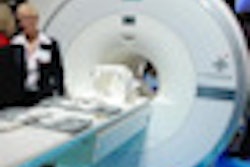Dear Molecular Imaging Insider,
This issue of the Insider affords you an exclusive first look at a study from Memorial Sloan-Kettering Cancer Center, which concluded that a treadmill exercise test before an FDG-PET scan does not increase skeletal muscle FDG uptake and will not adversely affect PET image quality in a clinically significant manner.
The findings contradict the previous belief that physical exercise prior to a whole-body FDG-PET scan increases plasma glucose insulin levels, or FDG uptake, thus deteriorating the PET image. Read more by clicking here.
In other top stories, the future looks bright for PET radiopharmaceutical sales, which could grow more than tenfold in the U.S. by 2018. The new report from market research firm Bio-Tech Systems also projects that SPECT radiopharmaceutical sales in the U.S. will increase, although not as dramatically, in the next seven years.
And in clinical news, using PET and the radiotracer FDDNP, researchers are assessing the levels of amyloid plaques and neurofibrillary tangles -- characteristics of Alzheimer's disease -- in adults with Down syndrome. The findings from the University of California, Los Angeles may offer additional help in diagnosing dementia in adults with Down syndrome, who often develop Alzheimer's-like plaque and tangle deposits before the age of 40. The information could lead to earlier interventions and treatments before symptoms begin.
Also in this Insider, we have details on a proposal from the American College of Radiology and the Society of Nuclear Medicine (SNM) to improve training and interpretation of hybrid images. For improved competency in nuclear medicine and molecular imaging, the panel recommended more training in anatomic and functional imaging. In addition, the group concluded that there is a need for general radiologists to have basic nuclear medicine skills, and for nuclear medicine physicians to have training in anatomic imaging.
If you were unable to attend the SNM annual meeting in San Antonio earlier this month, you can still read about the first-ever study on the clinical use of PET/MRI and a breakthrough on the use of FDG-PET to detect fevers of unknown origin. Also, click here for a story on the U.S. clearance of the first commercially available PET/MRI scanner.
Another SNM highlight is the Image of the Year. Researchers from the Hospital Mãe de Deus in Porto Allegre, Brazil, and Stanford University in Stanford, CA, took home the top honor in 2011.
Be sure to stay in touch with the Molecular Imaging Digital Community on a daily basis to be informed on the latest news and research.



















